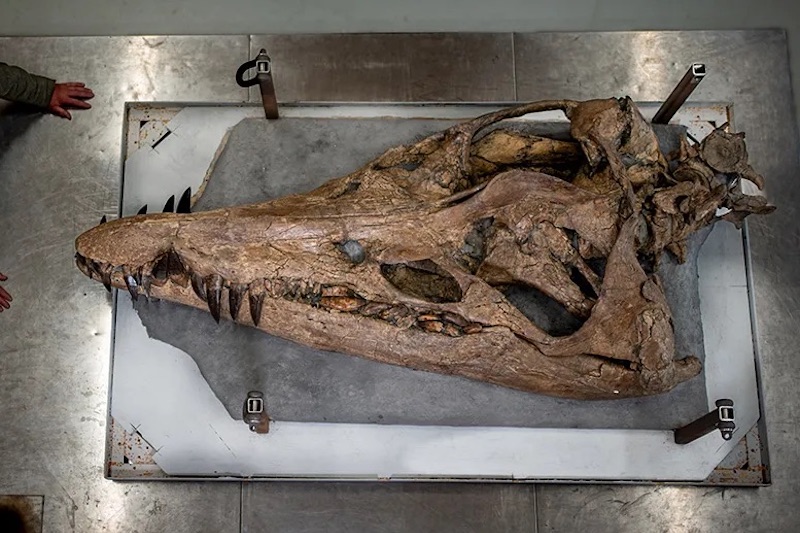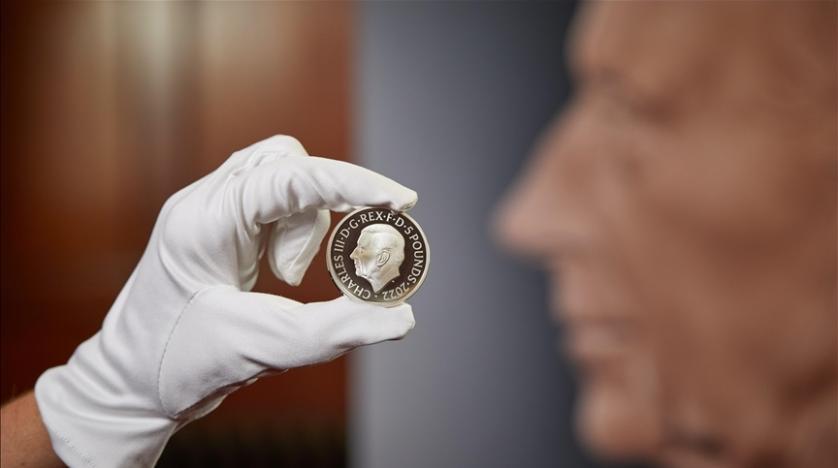This skull belonged to a pliosaur, a wild marine reptile that roamed the oceans about 150 million years ago.
The two-meter-long fossil is one of the most complete examples of its kind ever discovered and provides new insights into this ancient predator.
Paleontologist Steve Etches believes there is no other example like it anywhere else. “It’s one of the best fossils I’ve ever worked on. What makes it unique is its completeness.”
“The lower jaw and the rest of the skull are connected together, as they were in life. There are almost no specimens worldwide with this level of detail. Usually when fossils like this are found, many parts are missing. This one has all the bones.”
The animal’s skull is longer than most humans, which gives a good idea of how big the creature must have been overall. The 130 teeth in its mouth are quite prominent, especially the front ones.
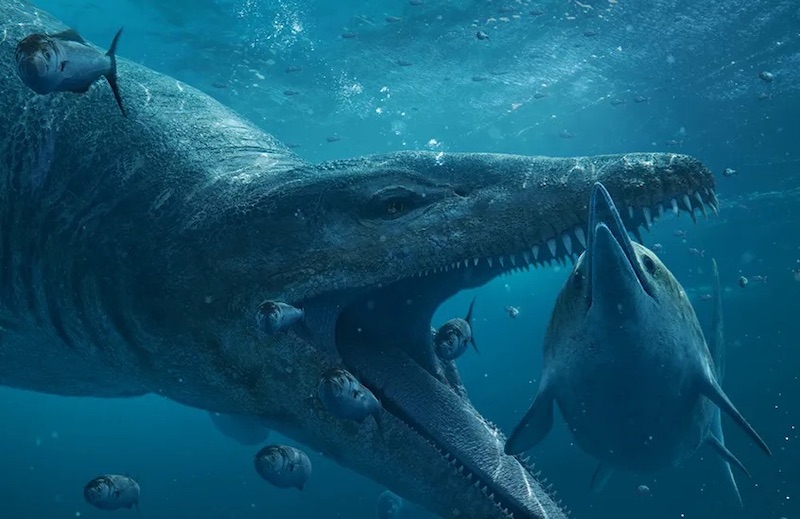
These teeth were long and razor-sharp, capable of killing prey with a single bite. But a closer look reveals that behind each tooth are thin ridges. These helped it to pierce the flesh of its prey and then quickly pull out its dagger-like teeth, ready for a quick second attack.
The Pliosaur was a huge killing machine and the largest predator in the ocean, 10-12 meters long, with four powerful fin-like limbs that moved itself at high speed.
“The animal was so large that I think it could effectively hunt anything that was unfortunate enough to be in its range. There’s no doubt in my mind that this is a sort of underwater T. rex,” says Dr. Andre Rowe of the University of Bristol.
His meals would have included other reptiles, such as his long-necked cousin the plesiosaur and the dolphin-like ichthyosaur, and fossil evidence suggests that he even feasted on other pliosaurs he came across.
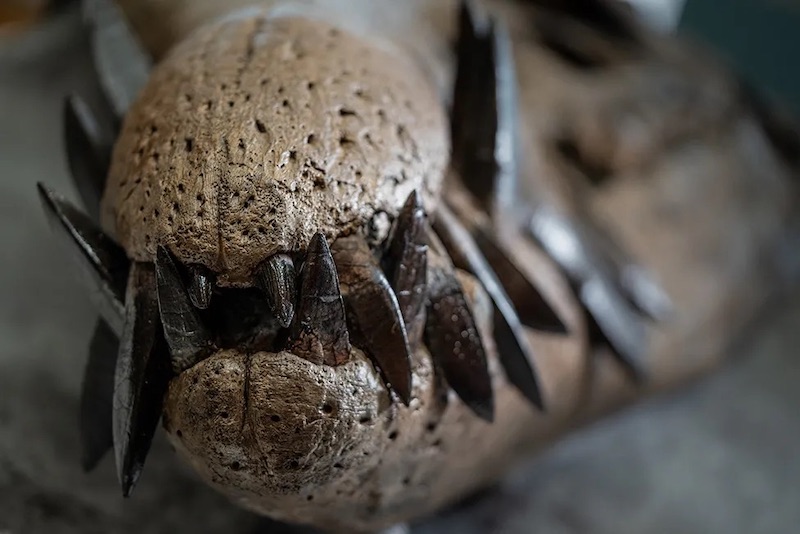
The discovery of this gigantic fossil skull was also extraordinary. It all started with a chance discovery during a walk on a beach near Kimmeridge Bay on the Jurassic Coast, a famous World Heritage site in southern England. Steve Etches’ friend and fellow fossil enthusiast Phil Jacobs came across the tip of a pliosaur’s nose lying in the stones. It was too heavy to carry, so they went to fetch Steve and the pair then prepared a makeshift stretcher to carry the fossil fragment to safety.
And where was the rest of the animal? A drone survey of the high cliff face identified a possible location. The problem, however, was that the only way to dig down to the body was from above.
Digging fossils out of rocks is always a painstaking and delicate task. But doing it while dangling by ropes from a collapsing cliff 15 meters above the beach requires another level of skill.
Bite Force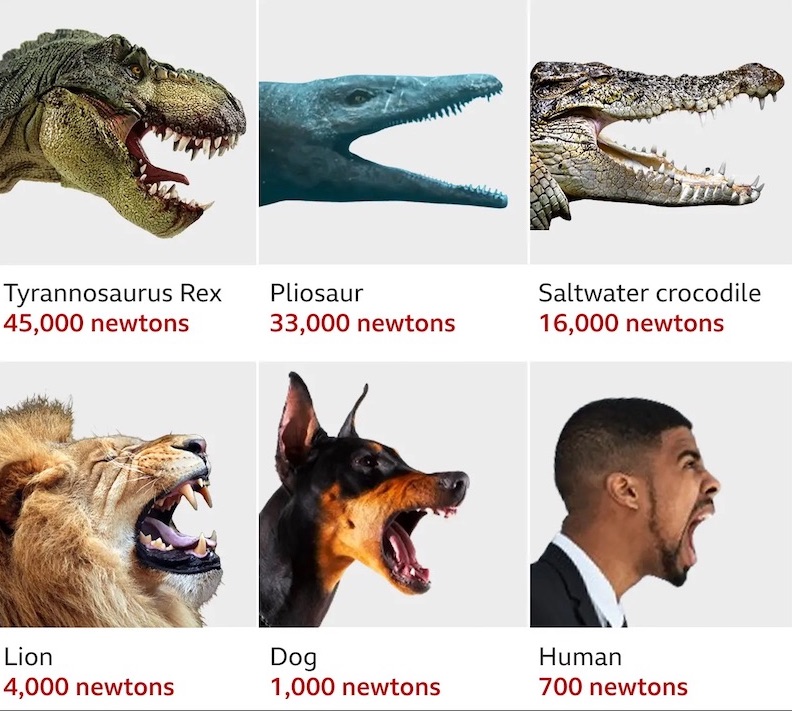
The courage, dedication and months spent cleaning the skull were definitely worth it. Scientists from around the world look forward to visiting the Dorset fossil to gain new insights into how these magnificent reptiles lived and dominated their ecosystems.
Paleobiologist Prof. Emily Rayfield examined the large circular openings at the back of the head. These openings tell us about the size of the muscles that powered the pliosaur’s jaws and the forces generated as its mouth closed and crushed its prey.
At its peak, this comes out to about 33,000 Newtons. By comparison, the strongest jaws in currently living animals are reportedly found in saltwater crocodiles at 16,000 Newtons.
“If you can create a really strong bite, you can neutralize your prey; it’s less likely to escape. A strong bite also means you can break tissue and bone quite effectively.”
“As for feeding strategies: crocodiles clamp their jaws on something and then twist, perhaps to tear off a limb of their prey. This is characteristic of animals whose heads expand from the back, and we see this in the pliosaur.”
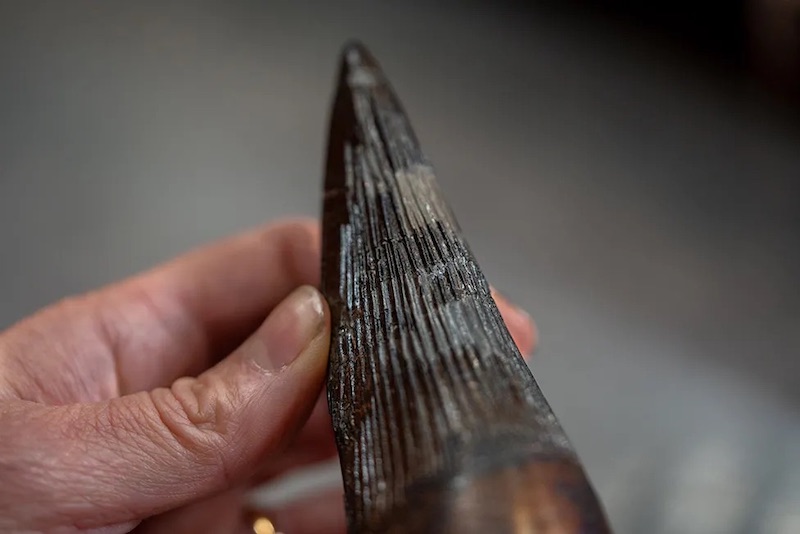
This newly discovered specimen has features that suggest it has particularly sharp and very useful senses. Its snout is equipped with small pits that could be the location of glands to help it detect changes in water pressure by potential prey.
There is also a hole in the head that can accommodate the parietal or third eye. Lizards, frogs and some fish living today have one of these. It was sensitive to light, which may have helped it locate other animals, especially when the pliosaur surfaced from deep, murky waters.
At the back of the head, some vertebrae stick out but disappear after a few bones. They are a promising clue that much of the fossil may still be in the abyss. Steve is eager to finish what he started.
“I’m willing to bet that the rest of the animal is there. And it really needs to come out now because it’s in a very fast eroding environment. This part of the cliff line is going back meters every year. And it won’t be long before the rest of the pliosaur appears and disappears. This is a once-in-a-lifetime opportunity.”
Steve Etches will exhibit the skull at his museum, the Etches Collection, in Kimmeridge next year.
BBC News. December 10, 2023.

